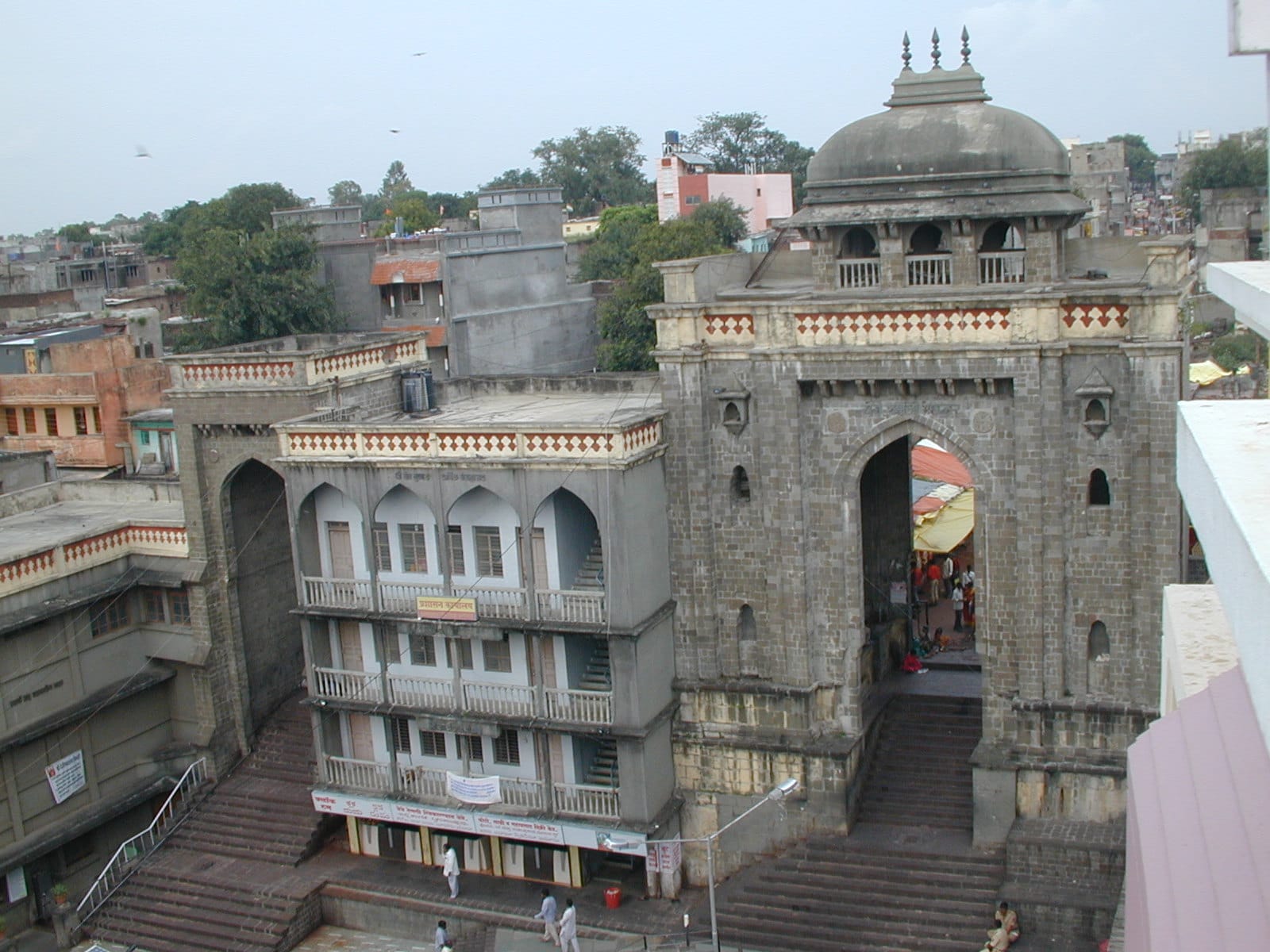Ever wondered who’s the brilliant mind behind the masterpiece “Bhavani Mandir”? Well, get ready for a mind-blowing journey as we uncover the true identity of the author! We’ll dive deep into their writing, follow every clue, and unravel the mystery that’s surrounded this literary gem for ages. Buckle up, folks, we’re about to step into a world of words and hidden secrets!
Who Wrote the Book Bhavani Mandir?
The pamphlet entitled “Bhavani Mandir” caused quite a stir in India during the early 1900s. This clandestine publication ignited a fervor for self-governance and liberation from British rule. For a time, the author’s identity remained shrouded in secrecy, adding to the intrigue surrounding this influential piece of literature.
The author of this potent call to action was none other than Aurobindo Ghosh, a prominent figure in the Indian nationalist movement. Penned in 1905 during a time of escalating tensions following the controversial partition of Bengal, “Bhavani Mandir” served as a rallying cry for Indian independence.
In “Bhavani Mandir,” Aurobindo envisioned a dedicated group of patriots, akin to a spiritual order, who would construct a temple dedicated to Bhawani. Bhawani, revered as the Hindu Mother Goddess, embodies strength and power. Aurobindo believed that erecting this temple would serve as a tribute to the spirit of India, fostering unity among its people.
The concept of “Bhavani Mandir” was likely inspired by another literary work, “Anandamath,” which similarly explored themes of freedom and resistance. However, Aurobindo added his own unique interpretation, linking Bhawani to the legendary Maratha warrior king, Shivaji. This ingenious connection served to unify diverse regions and cultures within India under a powerful, shared symbol.
“Bhavani Mandir” can be viewed as a symbolic blueprint for revolutionaries, urging Indians to rise and fight for their nation’s sovereignty. Drawing inspiration from Japan’s rise to power and independence, Aurobindo believed that India could achieve the same. He recognized that the path to freedom would demand courage, sacrifice, and an unwavering spirit of unity.
Adding an intriguing layer to the narrative, Aurobindo proposed the formation of a clandestine society, concealed within the protective embrace of the mountains. This dedicated group of freedom fighters would undergo rigorous physical and mental training, preparing themselves for the arduous struggle ahead.
The impact of “Bhavani Mandir” on the Indian populace was significant. Aurobindo’s words resonated deeply, igniting a collective yearning for a free and unified nation. His work provided a vision worth fighting for, inspiring countless individuals to join the struggle for independence.
Even today, the core themes woven into “Bhavani Mandir” remain strikingly relevant. The enduring power of unity, the importance of selflessness, and the unwavering spirit required to fight for one’s beliefs continue to hold profound significance.
If you want to become a historian, you’ll need to develop your ability to read and understand historical texts. You can learn more about teaching and learning history by visiting this blog.
Who wrote the book Kashi?
“Kashi: Secret of the Black Temple” is the brainchild of celebrated Indian author and entrepreneur, Vineet Bajpai. This thrilling novel marks the third installment in Bajpai’s captivating “Harappa Series.”
Known for his masterful ability to weave together historical narratives and mythological elements, Bajpai delivers a captivating reading experience in “Kashi.” The novel seamlessly blends ancient tales with a contemporary thriller, transporting readers through time as they uncover the secrets of the past.
“Kashi” plunges readers into a world reeling from the aftermath of a devastating flood. Amidst the chaos and uncertainty, a desperate battle ensues for possession of a powerful artifact known as the Ark. Thrust into the heart of the action, readers encounter a diverse cast of characters entangled in a centuries-old conspiracy. Bajpai masterfully pits good against evil, leaving the fate of humanity hanging precariously in the balance.
Eager to embark on this thrilling literary adventure? Here’s a helpful overview:
| Detail | Information |
|---|---|
| Author | Vineet Bajpai |
| Book Title | Kashi: Secret of the Black Temple |
| Series | Harappa Series (Book 3) |
| Genre | Fiction, Thriller, Fantasy, Historical Fiction, Mythology, Mystery |
Ready to unravel the secrets of “Kashi”? You can find this captivating novel online or at your local bookstore!
Who originally built Kashi Vishwanath Temple?
The Kashi Vishwanath Temple stands as a testament to India’s rich history and spiritual heritage. The temple’s origins are believed to be rooted in antiquity, with numerous accounts and legends contributing to its mystique.
Historical evidence suggests that the original Kashi Vishwanath Temple may have been constructed in the 11th century under the reign of Raja Man Singh. Deeply devoted to Lord Shiva, Raja Man Singh is said to have been inspired to erect the temple at the very spot where Lord Shiva manifested as a pillar of light, known as a Jyotirlinga.
Sadly, like many ancient structures, the Kashi Vishwanath Temple has faced its share of adversity. Throughout its long history, the temple has been subjected to invasions, attacks, and destruction. However, the people of Varanasi have demonstrated remarkable resilience, diligently rebuilding their beloved temple time and again.
In 1780, the remarkable Maratha queen, Ahilyabai Holkar, played a pivotal role in the temple’s restoration. Renowned for her piety and unwavering devotion, Ahilyabai Holkar oversaw the expansion of the temple’s inner sanctum, embellishing it with intricate carvings. Her contributions continue to be admired by visitors to this day.
It’s important to note that historical accounts can sometimes differ, and ongoing research may reveal new insights into the temple’s past. The Kashi Vishwanath Temple’s enduring presence serves as a testament to the power of faith and the indomitable spirit of those who have cherished and protected it throughout the ages.
Who wrote the book Kashi Ka Assi?
“Kashi Ka Assi,” a celebrated work of Hindi literature, transports readers to the vibrant streets of Varanasi’s Assi neighborhood. Authored by the esteemed Kashinath Singh, recipient of the prestigious Sahitya Akademi Award, this captivating novel offers a glimpse into the heart and soul of a community steeped in tradition.
Through his masterful storytelling, Singh paints a vivid portrait of Assi, capturing the essence of daily life, the cadence of local dialects, and the echoes of ancient rituals. The characters who populate the pages of “Kashi Ka Assi” feel remarkably real, their lives intertwined with the rhythms of their surroundings.
Transcending the boundaries of a mere setting, “Kashi Ka Assi” transports readers back to the 1990s, a turbulent period in India’s history. Singh skillfully weaves significant events, such as the Ram Janmabhoomi movement and the implementation of the Mandal Commission, into the fabric of his narrative. These events sparked widespread debates and discussions that reverberated through Assi, impacting the lives of its inhabitants in profound ways.
“Kashi Ka Assi” delves into the complexities of Indian society during a time of change and upheaval, exploring how historical events shape individual lives and community dynamics. Singh’s work offers a thought-provoking exploration of identity, belonging, and the enduring power of human connection.
Who wrote the book Kashi Yatre?
“Kashi Yatre,” a poignant novel by the renowned Kannada author, Triveni, holds a special place in the heart of Sudha Murthy, a celebrated Indian author and philanthropist. In her writings, Murthy recounts how “Kashi Yatre” ignited a passion for literacy in her own grandmother.
The story of “Kashi Yatre” revolves around an elderly woman’s longing to embark on a pilgrimage to Kashi, a journey of profound spiritual significance. Despite facing numerous challenges and setbacks, the protagonist’s unwavering faith and determination resonated deeply with Murthy’s grandmother, who had never had the opportunity to learn to read.
Inspired by the story’s message of hope and resilience, Murthy’s grandmother made the remarkable decision to embark on her own journey – a journey towards literacy. With unwavering determination, she diligently practiced the Kannada alphabet, gradually unlocking the world of words that had long been inaccessible to her.
“Kashi Yatre” served as a catalyst for change, illuminating the transformative power of literature and the indomitable nature of the human spirit. It’s a testament to the enduring power of stories to inspire, educate, and empower individuals from all walks of life.
What is the story behind Kashi?
Kashi, also known as Varanasi, holds an almost mythical status as one of the oldest continuously inhabited cities in the world. Located on the banks of the sacred Ganges River in India, Kashi is a city where time seems to stand still, where ancient traditions intertwine with the rhythms of modern life.
For Hindus, Kashi holds immense spiritual significance. Often referred to as the “City of Light,” Kashi is believed to be the abode of Lord Shiva. Legend has it that Kashi was created by Lord Shiva himself, arising from the divine trident of this revered deity.
At the heart of Kashi lies the Kashi Vishwanath Temple, one of Hinduism’s most sacred sites. Dedicated to Lord Shiva in his form as Vishwanath (“Ruler of the Universe”), the temple is believed to be the very spot where Shiva manifested as a Jyotirlinga. Pilgrims from all corners of India and beyond flock to the Kashi Vishwanath Temple, seeking blessings and liberation from the cycle of birth and death.
The sacred Ganges River flows through the heart of Kashi, its ghats (stone steps leading down to the water) bustling with activity from dawn till dusk. Hindus believe that bathing in the Ganges at Kashi washes away sins and brings one closer to moksha, liberation from the cycle of reincarnation.
Kashi is a city of striking contrasts. Ancient temples and shrines stand in close proximity to bustling markets and lively residential neighborhoods. The air is thick with the scent of incense, marigolds, and sandalwood. The sounds of temple bells, chanting priests, and street vendors create a symphony of sensory experiences unique to this extraordinary place.
Despite its ancient roots, Kashi is a city that continues to evolve and adapt. Renowned for its silk weaving, music, and education, Kashi is a center of learning and creativity. The city is home to the Banaras Hindu University, one of India’s oldest and most prestigious universities.
A visit to Kashi is an unforgettable experience, a journey into the heart of India’s spiritual and cultural heritage. Whether seeking spiritual solace, cultural immersion, or simply a glimpse into a way of life seemingly untouched by time, Kashi is sure to captivate the senses and leave a lasting impression on all who wander through its ancient streets.
Who wrote the book Bhashya?
In the realm of Indian philosophy, the term “Bhashya” holds significant weight. “Bhashya,” derived from Sanskrit, refers to a detailed commentary or exposition on a primary or secondary text. Imagine a scholar meticulously dissecting a complex philosophical treatise, offering interpretations, providing context, and engaging in lively debates with other scholars – that’s the essence of a Bhashya.
While numerous Bhashyas have graced the annals of Indian literature, the 12th-century Hindu philosopher Ramanuja stands out for his influential work, the “Sri Bhashya.” This comprehensive commentary delves into the intricacies of Badarayana’s Vedanta Sutra, offering invaluable insights into one of Hinduism’s most important philosophical texts.
The tradition of writing Bhashyas in India predates Ramanuja by centuries. One of the earliest known examples is Patanjali’s “Maha-bhashya,” a 2nd-century BCE commentary on the Sanskrit grammar text, “Ashtadhyayi.” Another notable example is the “Sabara Bhashya,” attributed to the Mimamsa school of thought (1st-5th century CE), which delves into the Mimamsa Sutras, exploring the nature of dharma (duty) and Vedic interpretation.
Bhashyas typically follow a structured approach, often interpreting a text word by word, providing additional information, verifying or challenging existing interpretations, and culminating in the commentator’s own conclusions. These insightful commentaries serve as invaluable resources for students and scholars, offering a window into the evolution of thought within various schools of Indian philosophy.
Who wrote Kashi Baba?
Kashi Baba, also known as Lahiri Mahasaya (1828-1895), was a revered Indian yogi who played a pivotal role in reviving Kriya Yoga in modern times. Born Shyama Charan Lahiri into a Brahmin family, he led an extraordinary life dedicated to spiritual enlightenment.
Lahiri Mahasaya’s journey took a transformative turn when he encountered his guru, the enigmatic Mahavatar Babaji. This meeting led to his initiation into the ancient practice of Kriya Yoga, a technique involving advanced pranayama (breathing exercises) believed to accelerate spiritual growth.
Central to Lahiri Mahasaya’s teachings was the practice of inner pranayama, emphasizing the direct experience of Truth through meditation and self-realization. Unlike ascetics who renounced the world, he advocated for a balanced life, demonstrating that spiritual growth was attainable even while fulfilling familial and societal duties.
Breaking away from traditional norms, Lahiri Mahasaya initiated individuals from diverse backgrounds into Kriya Yoga, fostering inclusivity and challenging social barriers. His teachings emphasized personal experience over blind faith, encouraging his disciples to seek their own direct connection with the Divine.
Lahiri Mahasaya’s legacy lives on through his lineage of disciples, including Paramahansa Yogananda, who played a pivotal role in introducing Kriya Yoga to the West. His teachings continue to inspire countless spiritual seekers, reminding us that the path to self-realization is accessible to all who seek it with sincerity and dedication.
While we’ve explored the key figures associated with “Bhavani Mandir” and Kashi Baba, it’s important to remember that ongoing research and exploration continuously unearth new perspectives and insights. As we delve deeper into the captivating world of Indian spirituality, we’re bound to uncover more fascinating details about these influential individuals and their profound teachings.
- Unveiling the Enigma: Mansoureh Khojasteh Bagherzadeh’s Public Appearances & Private Life in Iran - July 18, 2025
- Unveiling the Mystery: Mansoureh Khojasteh Bagherzadeh’s Husband: A Rare Glimpse into a Private Life - July 18, 2025
- Unveiling Masoud Khamenei’s Mother: Power, Influence, and Iran’s Future - July 18, 2025
















